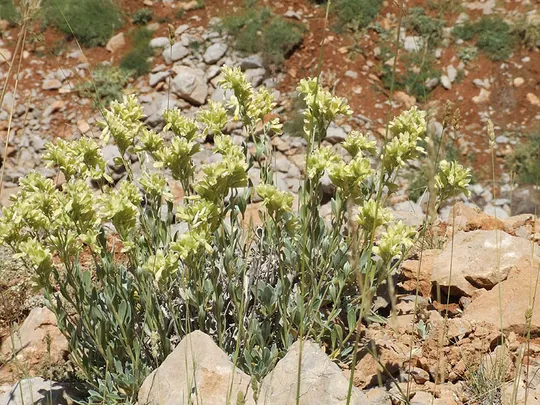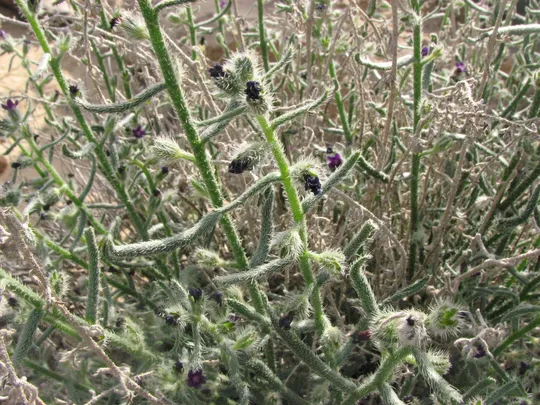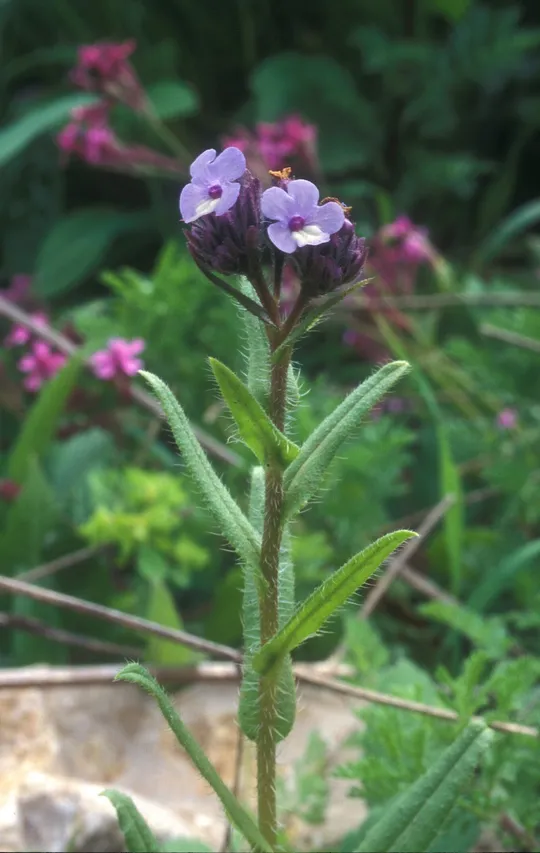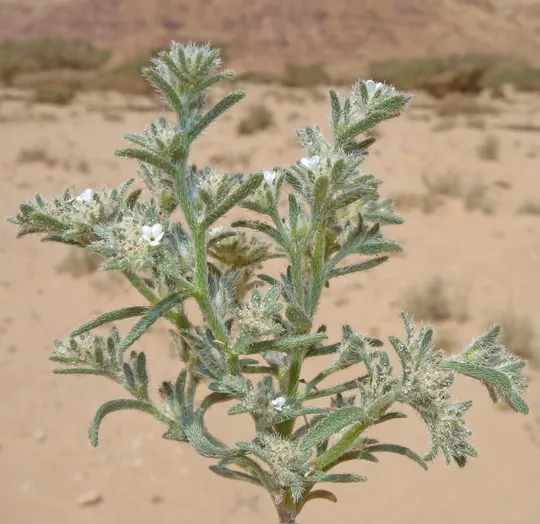Giant Golden Drop
Onosma gigantea
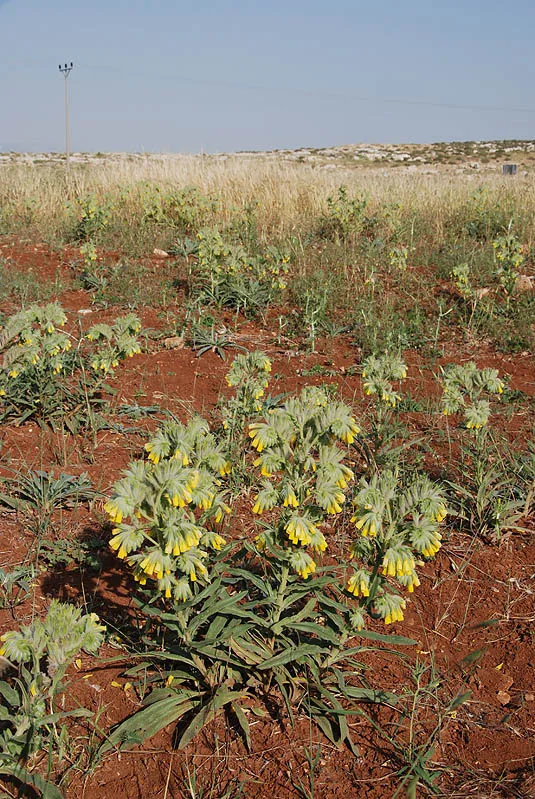
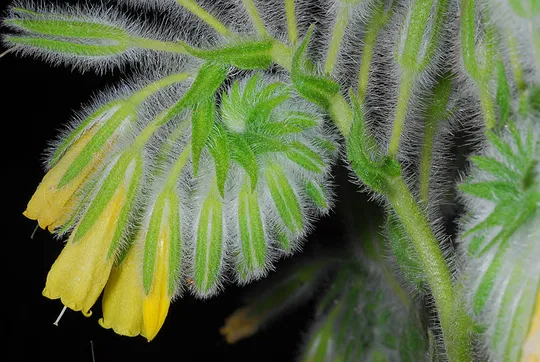
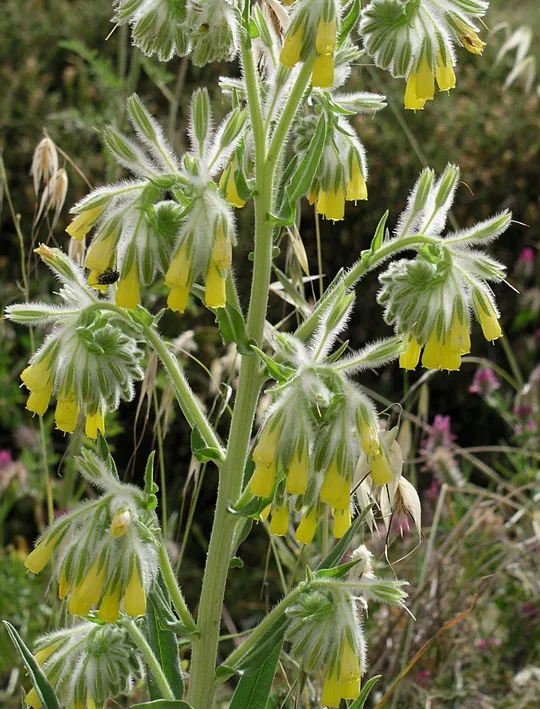
Onosoma gigantea grows in the Lower
Galilee, Jezreel Valley, Gilboa, Samaria, and Samarian Desert, Judean hills, in
the Shfela and in Pleshet, at 24 documented sites. According to estimates,
there are a total of 40 sites. In the Lower Galilee, it grows in the Sde Ilan
grove. In the 1930s-1950s it was collected from Tamara, Tiv'on and Kfar Tavor,
but has become extinct there. In the Jezreel Valley, it survived in the Afula
area, but it disappeared from the rest of the region – from En Harod, Kfar
Yehezkel, Merhavia and Nahalal. In the Gilboa it was discovered on Mount Avinadav
and Mount Malkishua. In the Samarian Desert, it was recorded in Mekhora, Gitit
and Ma'ale Ephraim Junction. In Samaria, it grows on the boundary with the
Judean Mountains and in the Shfela it grows in Sha’ar HaGay and in Canada Park;
in the Judean Mountains it is found in the Wadi
Sorek-Nes Harim area, Wadi Itla and Gush Etzion. Many sites are found in the
Shfela: Kfar Ruth, the Bet Nir area, north of Kiryat Gat and in Shomria. It is
also found west of Bet Guvrin and near Tel Goded. In a recent study in the
Southern Shfela area, many other additional sites were found (Giladi and Ziv,
2010). O. gigantea disappeared from the Hulda area but was
found in the Gefen area. In Pleshet, O. gigantea populations
are located in the Kiryat Gat Forest. Populations that previously grew in the
Gedera-Be'er Tuvia area have disappeared. The species is extinct in the
following regions: Acre Valley (Haifa), Carmel Coast (west of Zikhron Ya'akov)
and the Sharon (the Yarkon).
Traditionally cultivated agricultural fields, fallow
fields and planted groves, particularly on deep alluvial soils. It was once thought
to grow only in this type of habitat, but in the 1990's it was also found in open
rocky habitats on light soils and even on marly soils together with herbaceous
vegetation. O. gigantea is currently found only in secondary disturbed
habitats, it is not clear where it grew prior to its appearance in the region, possibly
among herbaceous vegetation in deep soils.
The genus Onosoma
includes about 150 perennial herbaceous species or dwarf shrubs that grow around
the Mediterranean Basin and in Western Asia. A few species grow in Israel. The genus
Podonosma is the closest genus to Onosoma and according to some botanists is now
included in the genus Onosoma (Greuter, 1984). O. gigantea plants in Turkey and Cyprus were
described as a bristly species (var. hispidum) with characteristic
sparse bristles, although in the Flora of Turkey its status as an independent
taxon is doubtful (Riedl, in Davis, 1978).
·
The number of regions and sites in
which Onosoma gigantea grows in Israel is on a continuous
declining trend.
·
The populations on most sites numbers
few to dozens of plants and very rarely can reach hundreds.
·
The decrease in the area of habitats in
which traditional agriculture is practiced and of fallow fields with heavy soil,
in addition to dense afforestation are the main reasons for the decline in the
number of sites and also pose a threat for the future.
·
Protected in the Balfuria, Horesh
Adulam and Wadi Sorek nature reserves.
·
A variety of O. gigantea (O. gigantea var. Hispida)
is classified in the Red Book of Cyprus as "Critically Endangered"
(CR) according to the IUCN categories (Tsintides, 2007). No information is available on the threat and
conservation status of the species in other countries.
Specific conservation
sites for Onosoma gigantea in disturbed areas should
be established, mainly in or near planted forests, where there is a chance that
the designated land use will not change. The sexual and asexual reproductive
mechanisms of the species should be studied to create backup populations in refuge
gardens and to reinforce existing populations. Fruit maturation should be
monitored to check whether a lack of pollinators limits the number of seeds produced
and whether artificial pollination can increase the number of seeds. O.
gigantea is an attractive plant and should be introduced
for use in arid gardening.
Onosoma gigantea is found in the
eastern Mediterranean Basin. It grows in southern Turkey, Cyprus (extremely
rare), western Syria, northern Jordan and Israel.
Onosoma gigantea is a perennial grass
that grows mainly on deep alluvial soils in disturbed areas and at the margins
of traditionally cultivated fieds. The number of regions and sites in which it
grows is declining significantly and its unique habitat is vulnerable and is
rapidly shrinking. O. gigantea flowers are large
and attractive and Israel is at the edges of its global distribution. It is not
protected in any nature reserve.
ראה ברשימת הספרות הכללית
Current Occupancy Map
| 1000 squre meter pixel | 5000 squre meter pixel | 10000 squre meter pixel | |
|---|---|---|---|
| number of observations | 0 | 0 | 0 |
| in total pixels | 0 | 0 | 0 |
| Family | Boraginaceae |
| Classification | On the endangered species list |
| Ecosystem | Mediterranean |
| Chorotype | Mediterranean |
| Conservation Site | JNF Forests west of Kiryat Gat and Upper Afula Grove |
| Rarity |
1
1
6
|
|---|---|
| Vulnerability |
0
3
4
|
| Attractiveness |
0
2
4
|
| Endemism |
0
0
4
|
| Red number |
1
3.7
10
|
| Peripherality | N |
| IUCN category | DD EW EX LC CR EN VU NT |
| Threat Definition according to the red book | Vulnerable |
 Based on:
Based on:
